Back to search results
CEMENT CREEK PLANTATION
CEMENT CREEK ROAD EAST WARBURTON, YARRA RANGES SHIRE
CEMENT CREEK PLANTATION
CEMENT CREEK ROAD EAST WARBURTON, YARRA RANGES SHIRE
All information on this page is maintained by Heritage Victoria.
Click below for their website and contact details.
Victorian Heritage Register
-
Add to tour
You must log in to do that.
-
Share
-
Shortlist place
You must log in to do that.
- Download report
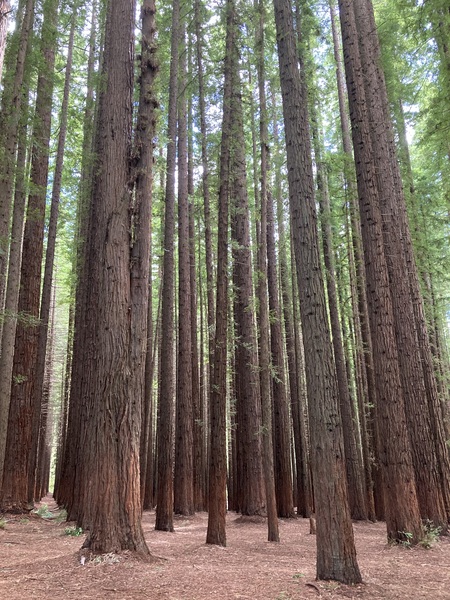
Cement Creek Plantation 2023 1

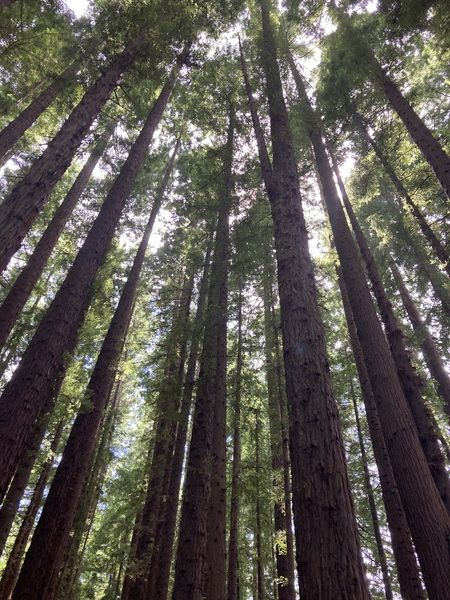
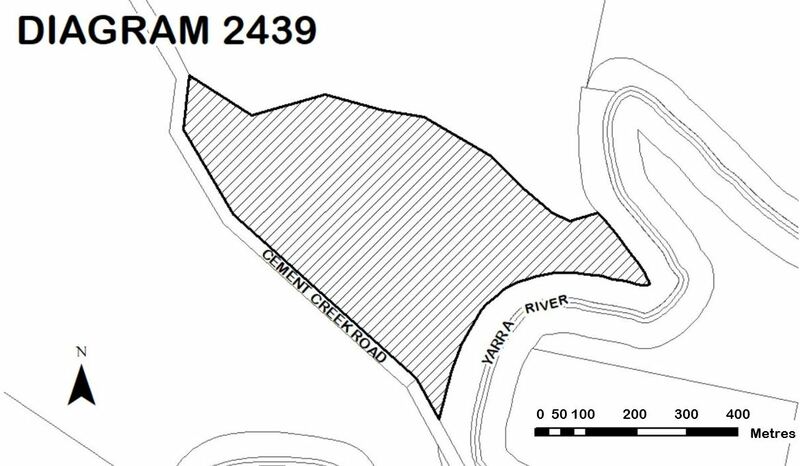
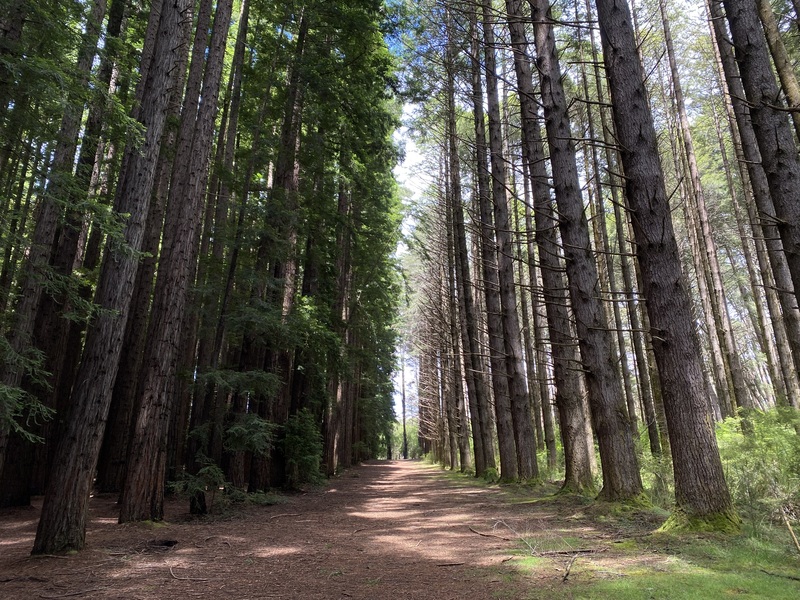
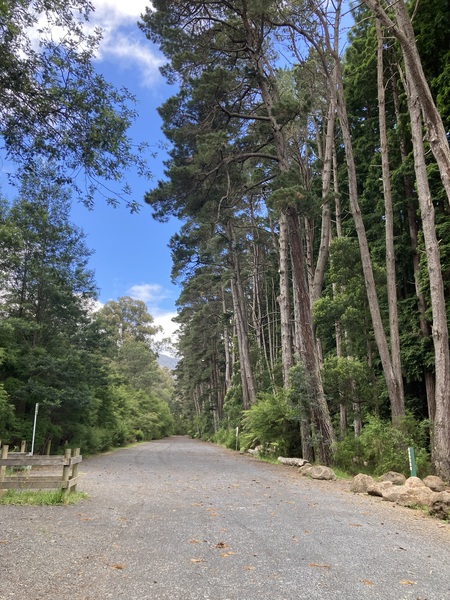
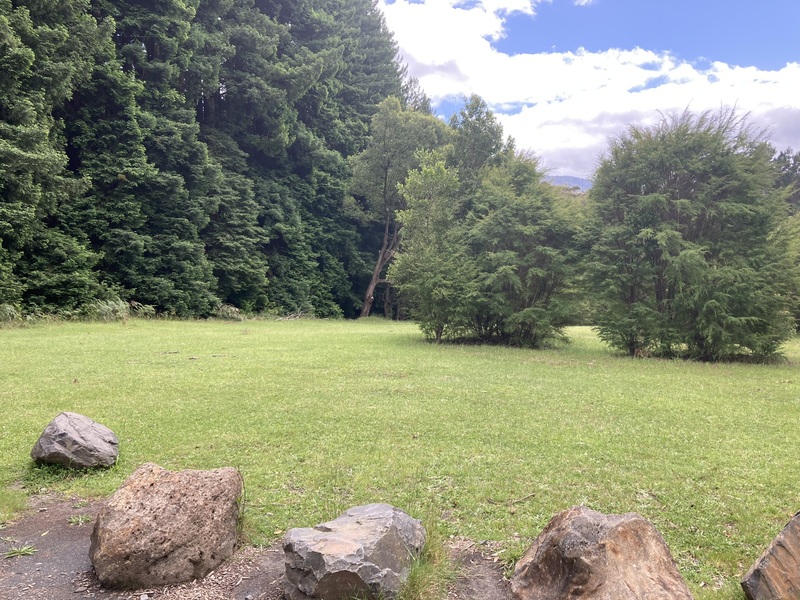
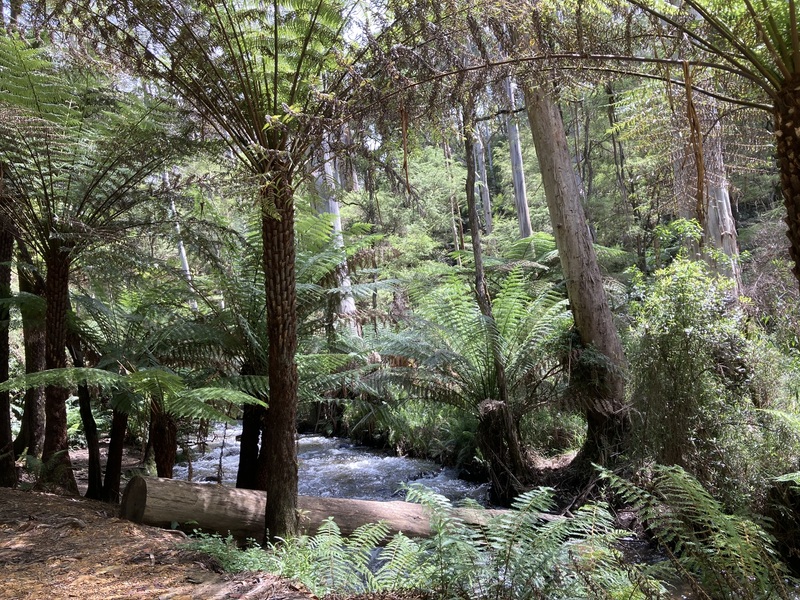
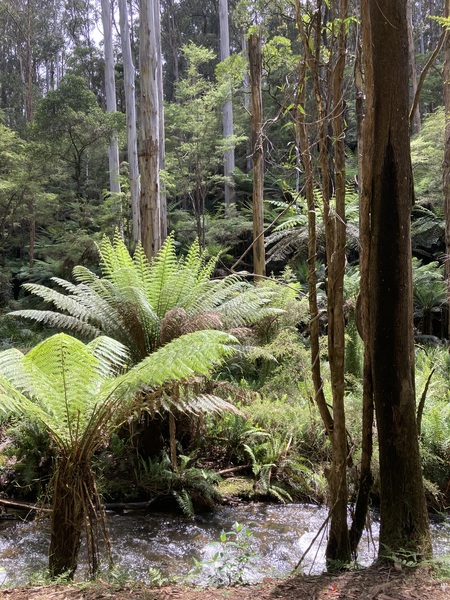
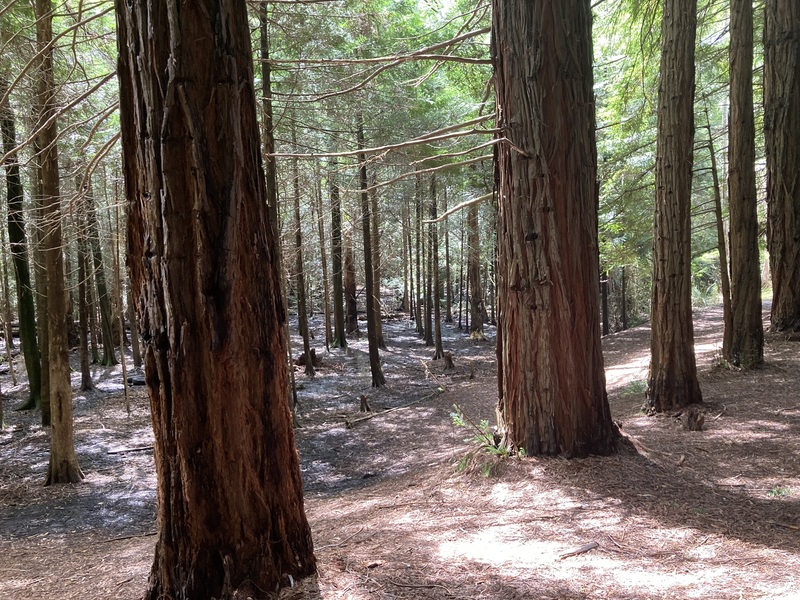
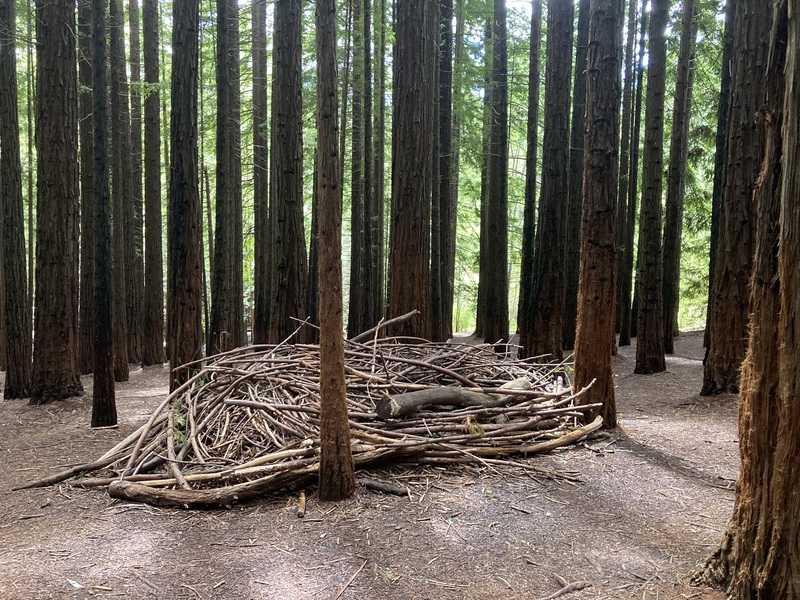
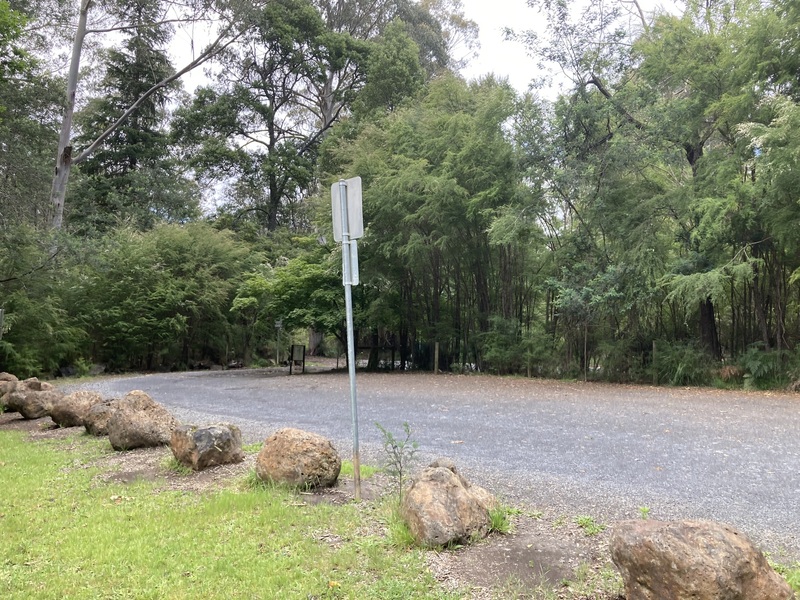
On this page:
Statement of Significance
Cement Creek Plantation is located on Wurundjeri Country.
What is significant?
The Cement Creek Plantation, being approximately 1.8 hectares (4.5 acres), created by the Melbourne Metropolitan Board of Works (MMBW) from 1929, including 13 planted plots containing over 1476 trees, fixtures on some trees including collars and metal number tags, access tracks, the former caretaker’s residence block.
How is it significant?
The Cement Creek Plantation is of historical and aesthetic significance to the State of Victoria. It satisfies the following criterion for inclusion in the Victorian Heritage Register:
Criterion A
Criterion A
Importance to the course, or pattern, of Victoria’s cultural history.
Criterion D
Criterion D
Importance in demonstrating the principal characteristics of a class of cultural places and objects
Criterion E
Criterion E
Importance in exhibiting particular aesthetic characteristics.
Criterion F
Criterion F
Importance in demonstrating a high degree of creative or technical achievement at a particular period.
Criterion H
Criterion H
Special association with the life or works of a person, or group of persons, of importance in Victoria’s history.
Why is it significant?
The Cement Creek Plantation is historically significant for its association with the provision of Melbourne’s clean water supply. It demonstrates the MMBW’s scientific endeavours from the 1920s and 1930s to ensure water purity in catchment areas which had been degraded through decades of farming, fires and logging of native forests. Part of an extensive revegetation program, this experimental plantation tested the potential of conifer species to improve land and water quality, as well as for their commercial timber potential. By the 1960s and 1970s, it was the site of the MMBW’s hydrological research to establish the impact of commercial timber growing in water catchment areas.
(Criterion A)
The Cement Creek Plantation a historically significant as a notable experimental plantation in a water catchment area. It represents a key moment in the management of Melbourne’s clean water supply when conifer species were tested for their capacity to improve land and water quality from the 1920s and 1930s. Although it is now understood that Victoria’s land, water and forest ecology is better served by revegetation with native species, the MMBW’s conifer experiments represent an evolutionary phase of water and forestry science.
(Criterion D)
The Cement Creek Plantation is aesthetically significant for its cathedral-like atmosphere created by the over 1476 trees up to 55 metres high systematically planted in regular formations. The place is noticeably quiet as few native birds or animals are attracted to non-native conifers. The visual and non-visual aspects of this commanding landscape inspire emotions including awe, fear, peace and mystery. The close planting of Coast Redwoods in Plot 1 has particularly unusual sensory qualities, being dark due to its closed canopy and silent as a result of the thick Redwood bark absorbing sound. The plantation has achieved widespread public acclaim for its aesthetic qualities.
(Criterion E)
The Cement Creek Plantation is of scientific significance as one of the largest and systematically laid out scientific plantations of the twentieth century in Victoria. Although it may now be considered a ‘failure’ because scientific evidence currently demonstrates that native species, rather than non-native conifers, have greater ecological benefits for land and water quality, the design and planting of such an ambitious experimental plantation was a breakthrough for the 1920s and 1930s. The pairing of trees at the Cement Creek Plantation with those at Coranderrk for hydrological research in canopy interception has been reported to be the longest in Victoria, lasting for around 10 years.
(Criterion F)
The Cement Creek Plantation a historically significant for its association with the Melbourne Metropolitan Board of Works (MMBW). From 1891 the MMBW was responsible for providing the vital public health services of sewerage and clean water supply for Melbourne. The plantation was an important experimental plantation to test conifer species in water catchment areas from the 1920s and 1930s to ensure the purity of Melbourne’s drinking water. Abandoned for this purpose from the 1980s and largely undisturbed until 2016, it is one of the few places that demonstrates the MMBW and its scientific approaches to reforestation during the twentieth century
(Criterion H)
Show more
Show less
-
-
CEMENT CREEK PLANTATION - History
Myrtlebrook Farm
The Cement Creek Plantation is located at the confluence of the Yarra River and Cement Creek. It is on the land of the Wurundjeri people and has been a source of fresh water, plant and animal resources. The Cement Creek waterway and surrounds retains many of its pre-European settlement ecological values, especially native riparian vegetation which includes areas of cool temperate rainforest, wet forest and riparian forest. It is also known to be habitat for Platypus and River Blackfish.
During the nineteenth century, the site came into the possession of selector Frederick Hansen as part of a larger 303-acre farm (Allotment 26). In 1891 Cement Creek Road was constructed through Hansen’s land and Allotment 26 was divided into Allotment 26A and Allotment 26B. Allotment 26B (later the location of the Cement Creek Plantation) became ‘Myrtlebrook Farm’ and was converted to freehold title in 1903. All of Hansen’s farming land was purchased by the Melbourne Metropolitan Board of Works (MMBW) in two stages between 1913 and 1928 and became part of 45,000 acres held by the MMBW in the Upper Yarra Water Catchment area.
MMBW acquisition
The purchase of Hansen’s farm was part of a larger plan of the MMBW to acquire all land north of the Yarra River to protect water catchment areas. Established in 1891, one of the key responsibilities of the MMBW was to ensure the supply of Melbourne’s clean water supply. During the early twentieth century, it became increasingly concerned that the water catchment areas were being affected by silt and impurities. By 1910, there were 123,227 connections to the system and water purity became an issue as the system became larger. Since the nineteenth century, the clearing of land for farming, logging for timber, introduced animal species and weeds, and the devastation of vegetation due to bushfires, had damaged natural ecosystems and affected water purity. There was also a fierce debate regarding the need to grow timber for harvesting and the protection of water catchments.
At that time, conifer plantations were thought to prevent soil erosion and also assist with the regeneration of native eucalypt forests. In addition, conifer plantations provided trees for the commercial timber industry, one of the aims of the newly created Forests Commission Victoria (FCV). Responsible for conserving native forests, preventing bushfires and ensuring the supply of plantation softwoods, the FCV had a target of creating 80,000 hectares of softwood plantations across Victoria from 1925.
MMBW conifer plantations
During the 1920s, the MMBW was engaged in an extensive reforestation and revegetation program to rehabilitate the land in water catchment areas. This became urgent after the 1926 bushfires. Species such as conifers and cottonwoods were preferred as they were thought to regenerate the land and promote waterway flows. The planting of conifers – for land regeneration, aesthetic reasons and as a timber resource – was evident in Victoria from the late nineteenth century. Coast Redwood (Sequoia sempervirens) had been cultivated in New South Wales since 1851. Considered a ‘clean tree’, the conifers were thought to ‘conserve the rain water and preserve its purity’. Pines, chiefly Pinus radiata, were widely planted in reservoir parks, along open channels, and in water catchment areas across Victoria. In the 1920s, the MMBW Water Supply Engineer explained the benefits of closely planted evergreen trees to protect water supplies by providing shade, lessening evaporation, binding the soil thereby providing ‘more reliable and regular’ flows into catchment waterways.
This preference for ‘clean’ conifers was based on forestry principles from Britain and North America. The MMBW and FCV had a limited understanding of the ecological balance in Victoria’s native forests and waterways, a balance that was well understood by Aboriginal people who had been managing the land for thousands of years. From the early 1800s, European settlement in Victoria was based on taming the natural environment and exploiting its resources. Harnessing clean and reliable water supplies was central to this. Efforts to improve the water supply were couched in language about progress and the resourcefulness and stoicism of the white Australian settler battling with a ‘harsh’ land.4
The MMBW Plantation at Cement Creek
Between 1929 and 1934, the MMBW established an experimental plantation at Cement Creek. The site was an experiment to gather data on the use of conifer species for land regeneration in water catchment areas, weed control as well as timber growing purposes.5 Originally covered by native eucalypt forest, the land had been cleared, presumably when a farm in Hansen’s possession, and had become overgrown with scrub and weeds such as blackberries. The MMBW progressively planted conifers in clearly delineated plots which could be monitored and generate data about each species. At Cement Creek there were three main phases of planting:- The first conifer plantings were carried out between 1929 and 1934 and included plantations of Coast Redwood (Sequoia sempervirens) (Plot 1 and 7); Douglas Fir (Pseudotsuga menziesii) (Plot 2 and 4); Monterey Pine (Pinus radiata) (Plot 5); plus, a narrow boundary planting of Bishop Pine (Pinus muricata) (Plot 13).
- The second conifer plantings were carried out between 1960 and 1963. They included further plantings of Monterey Pine (Plot 3 and 12), Douglas Fir (Plot 6 and 9) and a mix of Monterey Pine and Douglas Fir (Plot 10).
- The Western Red Cedar (Thuja plicata) (Plot 11) appears to have been planted in the early 1970s.
Hydrology research and canopy interception
During the 1960s and 1970s, the Cement Creek Plantation was selected to be part of MMBW’s forest hydrology research project in the field of canopy interception. Commencing in Coranderrk in 1954, this research program aimed to study the effects of timber harvesting on water yield and quality, as well as to establish the relationship between vegetation type and water yield. Such research was prompted by a debate about whether commercial timber growing should be allowed in water catchment areas. The MMBW argued that logging would reduce water yields, and the timber industry argued that increased water yields could result from the reduction of vegetation which accompanied logging. This particular experiment at the Cement Creek Plantation appears to have concluded by the late 1970s. This phase is reflected in remnant research fixtures on some trees, including collars and metal number tags at the interception plots.
From the 1980s, limited scientific activity took place at the Cement Creek Plantation. Sometime between 1983 and 2009, Hansen’s former farm homestead turned caretaker’s cottage was removed. The plantation was effectively abandoned and became known for its aesthetic qualities as a picturesque forest, particularly the main Coast Redwood plantings in Plot 1. Since the creation of the Yarra Ranges National Park in 1995 the plantation has predominantly been a place of public recreation managed by Parks Victoria. It remains in the Yarra River catchment area (4,110 km2) located in the Yarra River Upper (Rural) sub-catchment area.6 The plantation was not affected by the 1939, 1983 or 2009 bushfires.
The ecology of forest management in 2022
In 2022 Victoria’s water supply systems are managed with a greater understanding of Victoria’s ecological systems and different land management approaches. It is understood that the Yarra Ranges National Park is replete with carbon-rich forests, and home to the Mountain Ash Tree, one of the tallest tree species in the world. The conservation of native forests is a central principle in the forestry and the ecological sciences. There is evidence that water catchments covered with native old-growth mountain ash yield almost twice the amount of water annually as those covered with twenty-five-year-old regrowth.7 The Melbourne Water Corporation (the successor to the MMBW) has an active engagement with Traditional Owners to manage catchment areas, and recognises Aboriginal knowledge about preserving land and water quality.8 Some of the threats to catchments remain the same as the 1930s – bushfire, erosion, human and animal contamination and damage to land. In addition, new threats have emerged such as rapid population growth and higher demand for water, the impact of cars and other technologies, and climate change.9 The impact of tourism in some water catchment areas has also become an issue.
Aesthetic qualities and tourism since 2016
Cement Creek Plantation is now a popular tourist destination in the Yarra Ranges National Park and receives many visitors. The place was relatively unknown until featured on television show Better Homes and Gardens in 2016 and photographs quickly circulated on social media and tourism websites. The aesthetic qualities of the place have been widely acclaimed by the public. The close planting of Coast Redwoods in Plot 1 at 3.3 metres apart has created a closed canopy far above that prevents much light from reaching the ground. This dark cathedral-like space is silent. The thick Redwood bark absorbs sound, and few native birds or animals are attracted to these conifers. The plantation’s aesthetic qualities have seen it become a popular wedding venue, and location for fashion and music videos. In 2016, local Warburton artist David Digapony created a series of artworks within the main Redwood Forest. Taking the form of huge circular creations made from fallen branches, they attracted greater visitation to the plantation.
As the Cement Creek Plantation has only become popular recently, most of the public acclaim of its aesthetic qualities can be found online. The following public comments from the travel website ‘Trip Advisor’ provide evidence of this. They, like much of the commentary on the internet, offer insight into the visual and non-visual sensory aspects of the plantation which inspire emotions such as awe, fear, peace as well as a sense of mystery and magic:
- The tranquillity of this place is hard to describe. The moment you step inside, the outside world is left behind and all you can hear is nothing. (26 November 2018)
- It's hard to explain what happens upon entering this magical forest of towering Redwoods. (21 February 2019)
- This is a magical place to visit. (13 March 2019)
- Although a planted forest, you still get the feeling of the awesome grandeur…. (9 March 2020)
- It is incredibly quiet. (12 March 2020)
- [The] utter silence in that very place can devour your feelings the moment you step in to the middle of those giants. Peacefulness in one word (16 April 2020)
- Spooky ambience... (19 January 2021)
- Mesmerisingly beautiful! (9 July 2021)
- Highly recommend as it is very surreal and beautiful! (3 January 2022)
- Stunning place to visit. (9 January 2022)
- The place was aesthetically pleasing. I love how the redwood trees were arranged. (20 February 2022)
- It’s not until you enter the near perfectly planted forest that the grandeur overcomes you. Wow, simply, WOW. (24 May 2022).
Selected bibliographyBoughton, Walter, A Century of Water Resources Development in Australia 1900-1999, The Institution of Engineers, Australia, 1999.Carron, LT, A History of Forestry in Australia, ANU Press, 1995.Context (for Heritage Victoria), Victorian Water Supply Heritage Study Volume 1: Thematic Environmental History Final Report, 31 October 2007.Extent Heritage for Yarra Ranges Shire, Heritage Citation: Cement Creek Plantation, September 2022.Jacobs, for Melbourne Water, Environmental Flow Determination for Cement Creek: Issues Paper, 0002, Draft, 18 December 2019.Moulds, Francis Robert, The Dynamic Forest: A History of Forestry and Forest Industries in Victoria, Lynedoch Publications, Melbourne, 1991.National Trust Tree Register, Cement Creek Plantation, Cement Creek Road, WarburtonNational Trust Classification Report, T12138,Robert Vertessy, Fred Watson & Sharon O'Sullivan, 'Factors determining relations between stand age and catchment water balance in mountain ash forests', Forest Ecology and Management, Volume 143, Issues 1–3, 1 April 2001, pp. 13-26.Melbourne Water Corporation, Co-designed Catchment Program for the Yarra Catchment: Working Together for Healthy Waterways, 2018.Melbourne Water Corporation, Our Water Supply Challenges, accessed 19 December 2022.
ContactsThe Executive Director thanks the following people for their contribution to this assessment:- Hannah Elliott, Strategic Planner, Design & Place, Yarra Ranges Shire
- Vivian Lu, Heritage Advisor, Extent Heritage
- Paul Roser, Manager Heritage Partnerships, Parks Victoria
- Melissa Tuliranta, Ranger, Yarra Ranges National Park
- Kim Wilson, Statewide Heritage Advisor, Parks Victoria
CEMENT CREEK PLANTATION - Permit Exemptions
General Exemptions:General exemptions apply to all places and objects included in the Victorian Heritage Register (VHR). General exemptions have been designed to allow everyday activities, maintenance and changes to your property, which don’t harm its cultural heritage significance, to proceed without the need to obtain approvals under the Heritage Act 2017.Places of worship: In some circumstances, you can alter a place of worship to accommodate religious practices without a permit, but you must notify the Executive Director of Heritage Victoria before you start the works or activities at least 20 business days before the works or activities are to commence.Subdivision/consolidation: Permit exemptions exist for some subdivisions and consolidations. If the subdivision or consolidation is in accordance with a planning permit granted under Part 4 of the Planning and Environment Act 1987 and the application for the planning permit was referred to the Executive Director of Heritage Victoria as a determining referral authority, a permit is not required.Specific exemptions may also apply to your registered place or object. If applicable, these are listed below. Specific exemptions are tailored to the conservation and management needs of an individual registered place or object and set out works and activities that are exempt from the requirements of a permit. Specific exemptions prevail if they conflict with general exemptions. Find out more about heritage permit exemptions here.Specific Exemptions:Specific Exemptions
Exempt works and activitiesThe below permit exemption is not considered to cause harm to the cultural heritage significance of the Cement Creek Plantation, subject to the guidelines and conditions below.
The strip of native vegetation between the 2018 carpark and Cement Creek Road- All processes of land, water and animal management that are permitted within the Yarra Ranges National Park under the Parks Victoria Act 2018 and associated regulations and guidelines issued by Parks Victoria.
Guidelines- Where there is an inconsistency between permit exemptions specific to the registered place or object (‘specific exemptions’) established in accordance with either section 49(3) or section 92(3) of the Heritage Act 2017 (Vic) and general exemptions established in accordance with section 92(1) of the Heritage Act 2017 (Vic) specific exemptions will prevail to the extent of any inconsistency.
- In specific exemptions, words have the same meaning as in the Heritage Act 2017 (Vic), unless otherwise indicated. Where there is an inconsistency between specific exemptions and the Heritage Act 2017 (Vic), the Heritage Act 2017 (Vic) will prevail to the extent of any inconsistency.
- Nothing in specific exemptions obviates the responsibility of a proponent to obtain the consent of the owner of the registered place or object, or if the registered place or object is situated on Crown Land the land manager as defined in the Crown Land (Reserves) Act 1978 (Vic), prior to undertaking works or activities in accordance with specific exemptions.
- If a Cultural Heritage Management Plan in accordance with the Aboriginal Heritage Act 2006 (Vic) is required for works covered by specific exemptions, specific exemptions will apply only if the Cultural Heritage Management Plan has been approved prior to works or activities commencing. Where there is an inconsistency between specific exemptions and a Cultural Heritage Management Plan for the relevant works and activities, Heritage Victoria must be contacted for advice on the appropriate approval pathway.
- Specific exemptions do not constitute approvals, authorisations or exemptions under any other legislation, Local Government, State Government or Commonwealth Government requirements, including but not limited to the Planning and Environment Act 1987 (Vic), the Aboriginal Heritage Act 2006 (Vic), and the Environment Protection and Biodiversity Conservation Act 1999 (Cth). Nothing in this declaration exempts owners or their agents from the responsibility to obtain relevant planning, building or environmental approvals from the responsible authority where applicable.
- Care should be taken when working with heritage buildings and objects, as historic fabric may contain dangerous and poisonous materials (for example lead paint and asbestos). Appropriate personal protective equipment should be worn at all times. If you are unsure, seek advice from a qualified heritage architect, heritage consultant or local Council heritage advisor.
- The presence of unsafe materials (for example asbestos, lead paint etc) at a registered place or object does not automatically exempt remedial works or activities in accordance with this category. Approvals under Part 5 of the Heritage Act 2017 (Vic) must be obtained to undertake works or activities that are not expressly exempted by the below specific exemptions.
- All works should be informed by a Conservation Management Plan prepared for the place. The Executive Director is not bound by any Conservation Management Plan, and permits still must be obtained for works suggested in any Conservation Management Plan.
Conditions- All works or activities permitted under specific exemptions must be planned and carried out in a manner which prevents harm to the registered place or object.?Harm includes moving, removing or damaging any part of the registered place or object that contributes to its cultural heritage significance.
- If during the carrying out of works or activities in accordance with specific exemptions original or previously hidden or inaccessible details of the registered place are revealed relating to its cultural heritage significance, including but not limited to historical archaeological remains, such as features, deposits or artefacts, then works must cease and Heritage Victoria notified as soon as possible.
- If during the carrying out of works or activities in accordance with specific exemptions any Aboriginal cultural heritage is discovered or exposed at any time, all works must cease and the Secretary (as defined in the Aboriginal Heritage Act 2006 (Vic)) must be contacted immediately to ascertain requirements under the Aboriginal Heritage Act 2006 (Vic).
- If during the carrying out of works or activities in accordance with specific exemptions any munitions or other potentially explosive artefacts are discovered, Victoria Police is to be immediately alerted and the site is to be immediately cleared of all personnel.
- If during the carrying out of works or activities in accordance with specific exemptions any suspected human remains are found the works or activities must cease. The remains must be left in place and protected from harm or damage. Victoria Police and the State Coroner’s Office must be notified immediately. If there are reasonable grounds to believe that the remains are Aboriginal, the State Emergency Control Centre must be immediately notified on 1300 888 544, and, as required under s.17(3)(b) of the Aboriginal Heritage Act 2006 (Vic), all details about the location and nature of the human remains must be provided to the Secretary (as defined in the Aboriginal Heritage Act 2006 (Vic)).
CEMENT CREEK PLANTATION - Permit Exemption Policy
A heritage permit is required for all works and activities undertaken in relation to VHR places and objects. Certain works and activities are exempt from a heritage permit, if the proposed works will not harm the cultural heritage significance of the heritage place or object.
-
-
-
-
-
Cement Creek Redwood Plantation - See Cement Creek Plantation
 Yarra Ranges Shire
Yarra Ranges Shire -
Sequioa sempervirens
 National Trust
National Trust -
Pinus muricata
 National Trust
National Trust
-
'YARROLA'
 Boroondara City
Boroondara City -
1 Bradford Avenue
 Boroondara City
Boroondara City
-
-











